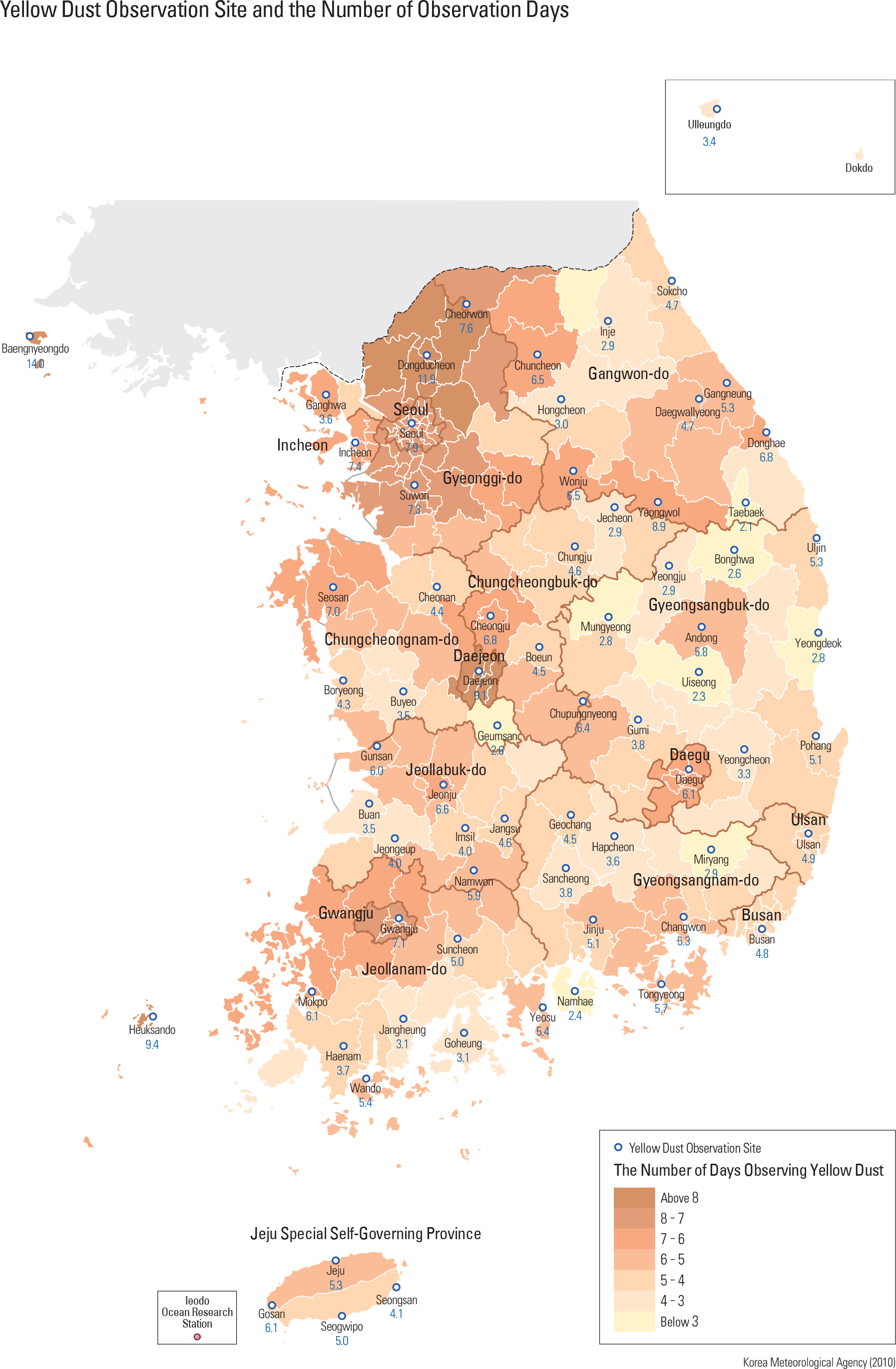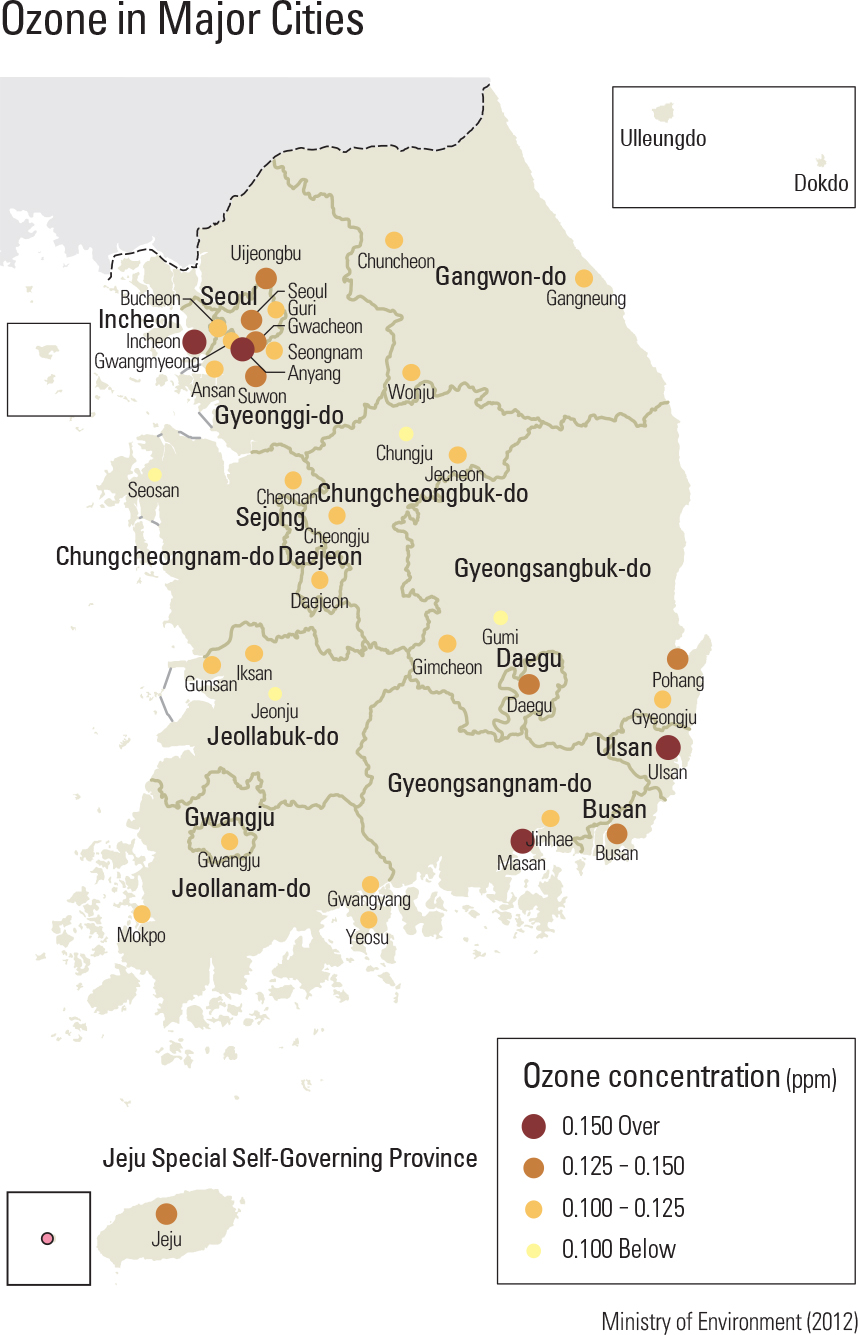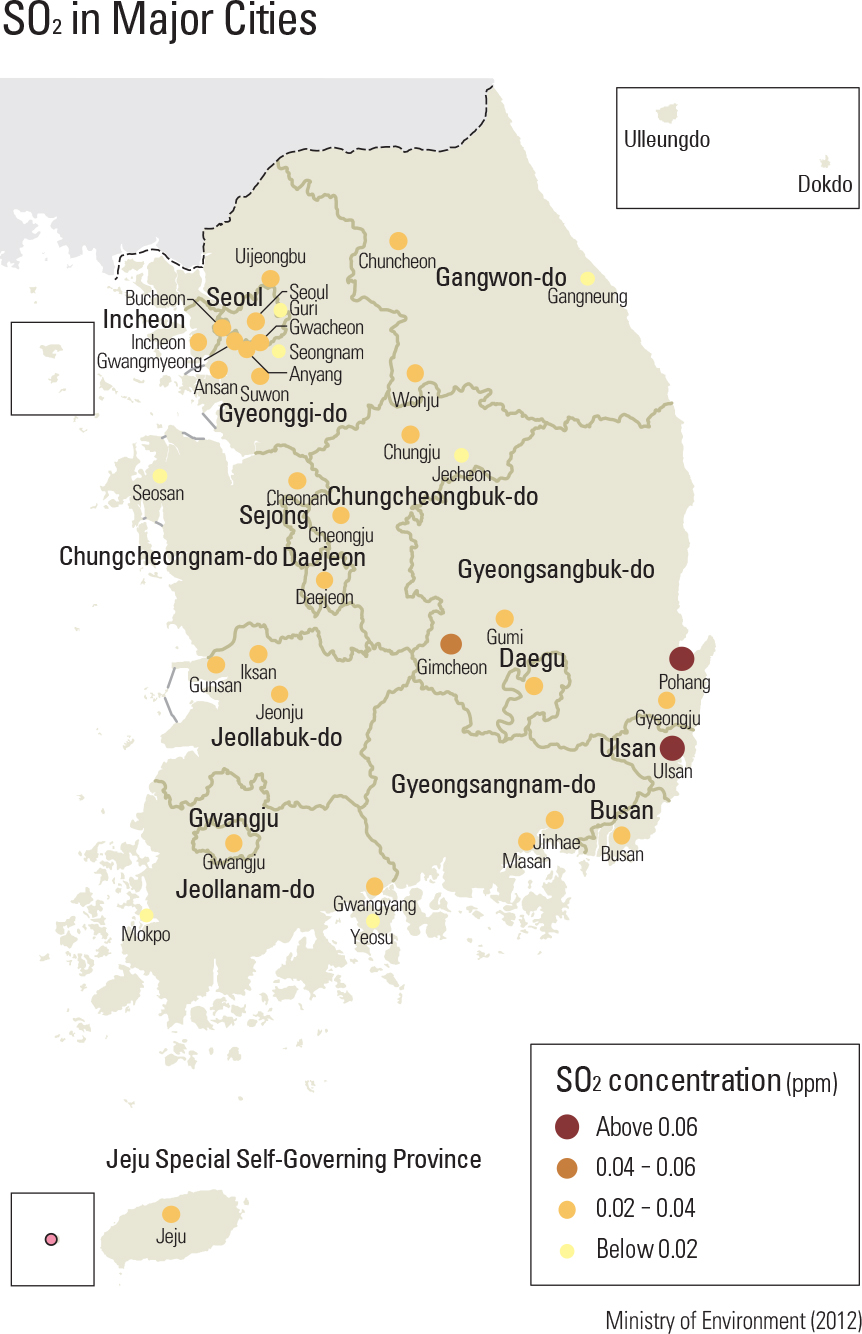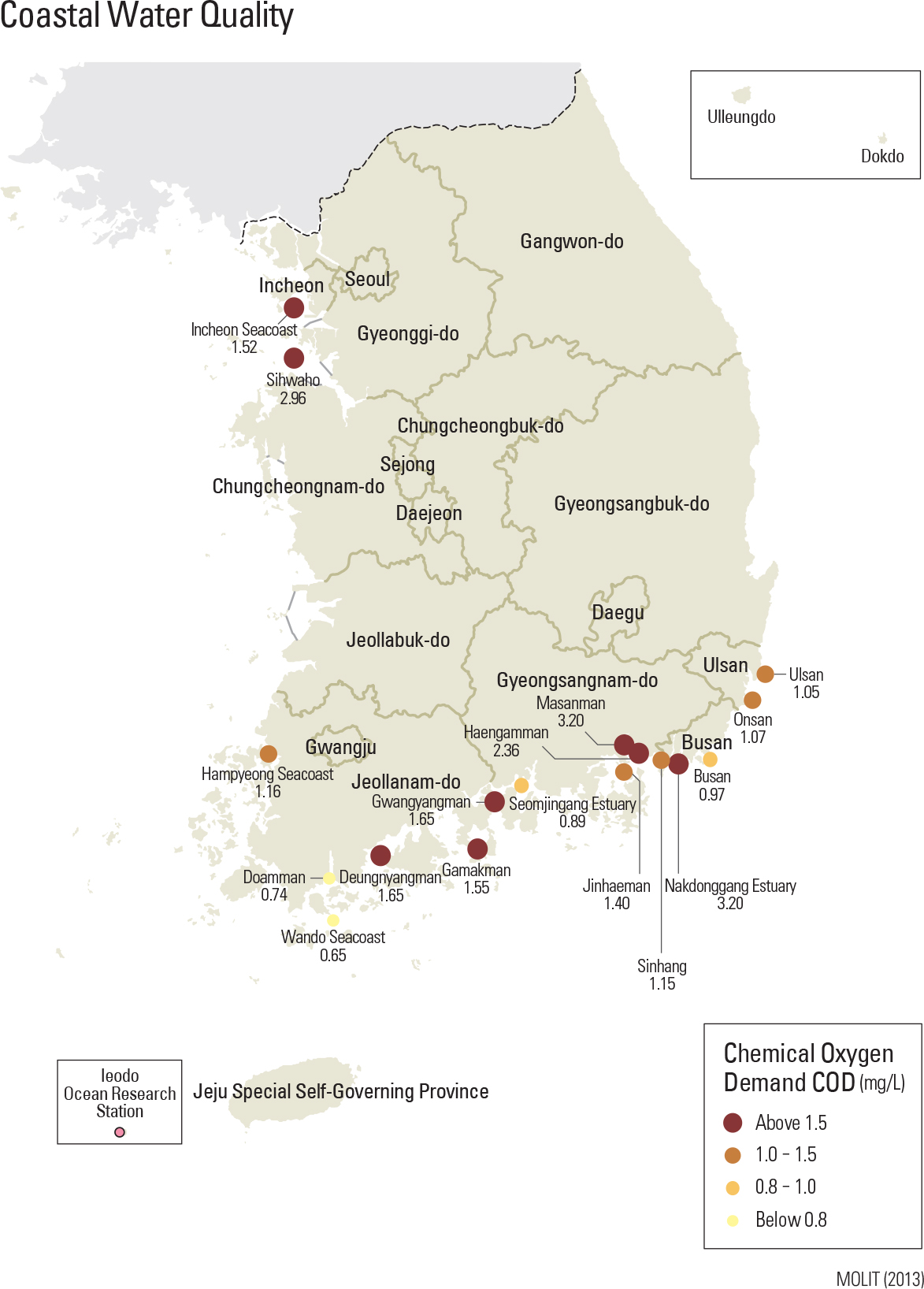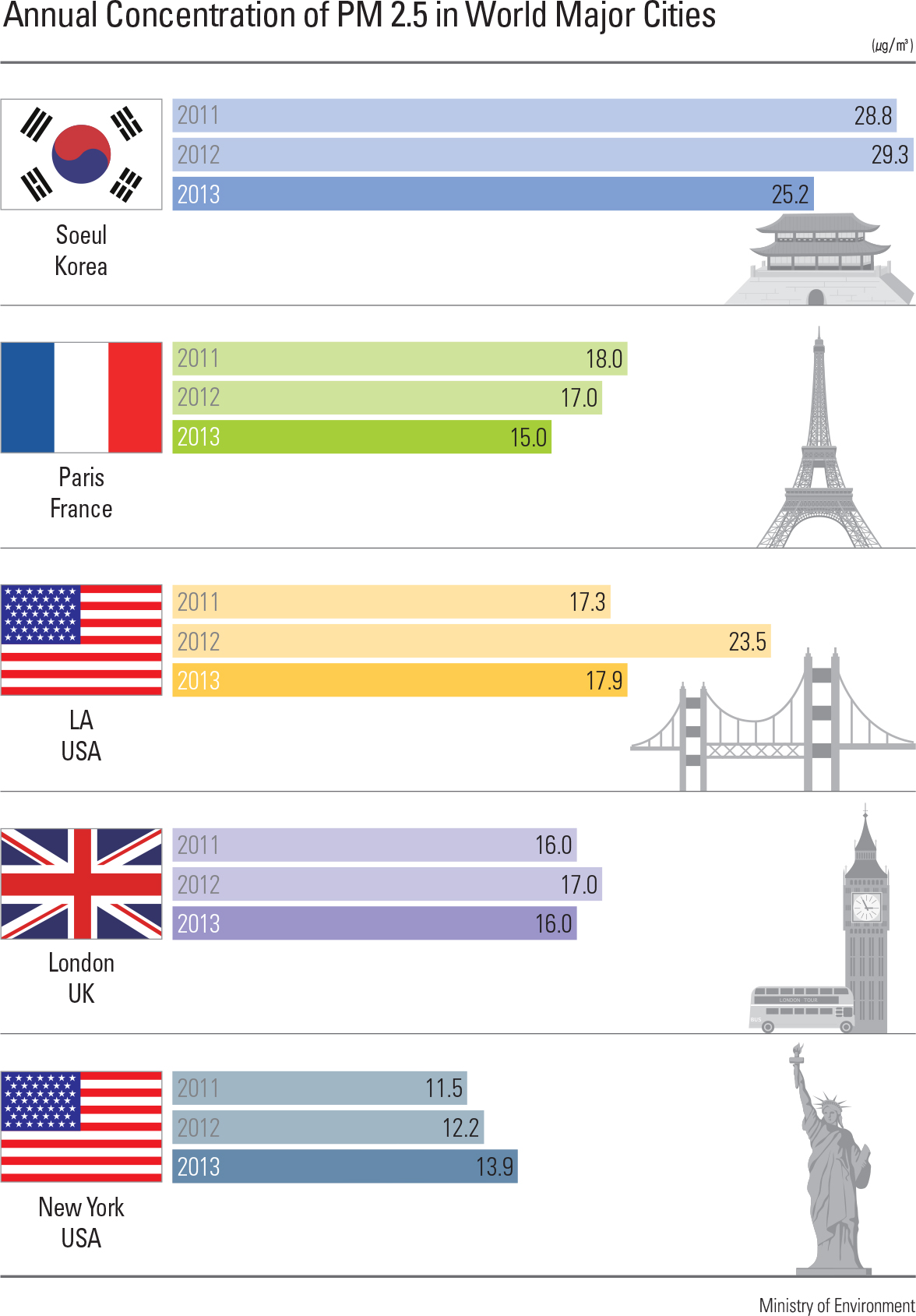English I
Yellow dust, fine dust, and ozone can become indiscriminately fatal to human beings when it is present in large quantities. Unlike other environmental pollutants, yellow dust, fine dust, and ozone can migrate with the weather. To mitigate such movement of pollutants will require international cooperation on the fundamental removal of the pollutant at their sources along with their continuous management. Too much exposure to these pollutants can be harmful or even fatal. PM2.5 refers to the extra fine dust with a particle size smaller than 2.5 micro-millimeters. Seoul took action to reduce fine dust in 2013, but has subsequently determined that the government must make continuous efforts for further reduction because other world cities still show much lower level of fine dust. Sulfur dioxide (SO2) is produced as a result of metal refining and chemical material production with fossil fuels. When people are exposed to high levels of SO2, they may suffer from irritation of the body’s mucosa which can then provoke dyspnea. SO2 is also a major component of PM10, which is a particle size smaller than 10 micro-millimeters. Nitrogen dioxide (NO2) is generated by chemical product manufacturing and the high temperature combustion process of car and power plants. When people are exposed to high amounts of NO2, they may suffer harm to their respiratory organs. The quality of coastal water is also very important to the country’s health because it directly relates to the health and sustainability of the coastal fishing industry. page_2 |
